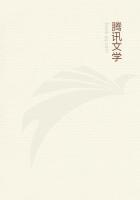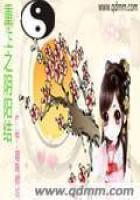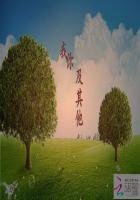Among the following charming wild roses, not natives, but naturalized immigrants from foreign lands, that have escaped from gardens, is Shakespeare's CANKER-BLOOM, the lovely DOG ROSE or WILD BRIER (R.canina), that spreads its long, straggling branches along the roadsides and banks, covering the waste lands with its smooth, beautiful foliage, and in June and July with pink or white roses.Because it lacks the fragrance of sweetbrier, which it otherwise closely resembles, it has been branded with the dog prefix as a mark of contempt.Professor Koch says that long before it was customary to surround gardens with walls, men had rose hedges."Each of the four great peoples of Asia," he continues, "possessed its own variety of rose, and carried it during all wanderings, until finally all four became the common property of the four peoples.The great Indo-Germanic stock chose the 'hundred-leaved' and RED ROSE (R.Gallica);nevertheless, after the Niebelungen the common dog rose played an important part among the ancient Germans.The DAMASCUS ROSE (R.
Damascena), which blooms twice a year, as well as the MUSK ROSE(R.moschata), were cherished by the Semitic or Arabic stock;while the Turkish-Mongolian people planted by preference the YELLOW ROSE (R.lutea).Eastern Asia (China and Japan) is the fatherland of the INDIAN and TEA ROSES."How fragrant are the pages of Chaucer, Spenser, and Shakespeare with the Eglantine! This delicious plant, known here as SWEETBRIAR (R.rubIginosa), emits its very aromatic odor from russet glands on the under, downy side of the small leaflets, always a certain means of identification.From eastern Canada to Virginia and Tennessee the plant has happily escaped from man's gardens back to Nature's.
In spite of its American Indian name, the lovely white CHEROKEEROSE (R.Sinica), that runs wild in the South, climbing, rambling and rioting with a truly Oriental abandon and luxuriance, did indeed come from China.Would that our northern thickets and roadsides might be decked with its pure flowers and almost equally beautiful dark, glossy, evergreen leaves!
COMMON RED, PURPLE, MEADOW, or HONEYSUCKLE CLOVER(Trifolium pratense) Pea family Flowers - Magenta, pink, or rarely whitish, sweet-scented, the tubular corollas set in dense round, oval, or egg-shaped heads about 1 in.long, and seated in a sparingly hairy calyx.Stem: 6in.to 2 ft.high, branching, reclining, or erect, more or less hairy.Leaves: On long petioles, commonly compounded of 3, but sometimes of 4 to 11 oval or oblong leaflets, marked with white crescent, often dark-spotted near center; stipules egg-shaped, sharply pointed, strongly veined, over 1/2 in.long.
Preferred Habitat - Fields, meadows, roadsides.
Flowering Season - April-November.
Distribution - Common throughout Canada and United States.
Meadows bright with clover-heads among the grasses, daisies, and buttercups in June resound with the murmur of unwearying industry and rapturous enjoyment.Bumblebees by the tens of thousands buzzing above acres of the farmer's clover blossoms should be happy in a knowledge of their benefactions, which doubtless concern them not at all.They have never heard the story of the Australians who imported quantities of clover for fodder, and had glorious fields of it that season, but not a seed to plant next year's crops, simply because the farmers had failed to import the bumblebee.After her immigration the clovers multiplied prodigiously.No; the bee's happiness rests on her knowledge that only the butterflies' long tongues can honestly share with her the brimming wells of nectar in each tiny floret.Children who have sucked them too appreciate her rapture.If we examine a little flower under the magnifying glass, we shall see why its structure places it in the pea family.Bumblebees so depress the keel either when they sip, or feed on pollen, that their heads and tongues get well dusted with the yellow powder, which they transfer to the stigmas of other flowers; whereas the butterflies are of doubtful value, if not injurious, since their long, slender tongues easily drain the nectar without depressing the keel.Even if a few grains of pollen should cling to their tongues, it would probably be wiped off as they withdrew them through the narrow slit, where the petals nearly meet, at the mouth of the flower.Bombus terrestris delights in nipping holes at the base of the tube, which other pilferers also profit by.
Our country is so much richer in butterflies than Europe, it is scarcely surprising that Professor Robertson found thirteen Lepidoptera out of twenty insect visitors to this clover in Illinois, whereas Muller caught only eight butterflies on it out of a list of thirty-nine visitors in Germany.The fritillaries and the sulphurs are always seen about the clover fields among many others, and the "dusky wings" and the caterpillar of several species feeds almost exclusively on this plant.
"To live in clover," from the insect's point of view at least, may well mean a life of luxury and affluence.Most peasants in Europe will tell you that a dream about the flower foretells not only a happy marriage, but long life and prosperity.For ages the clover has been counted a mystic plant, and all sorts of good and bad luck were said to attend the finding of variations of its leaves which had more than the common number of leaflets.At evening these leaflets fold downward, the side ones like two hands clasped in prayer, the end one bowed over them.In this fashion the leaves of the white and other clovers also go to sleep, to protect their sensitive surfaces from cold by radiation, it is thought.















